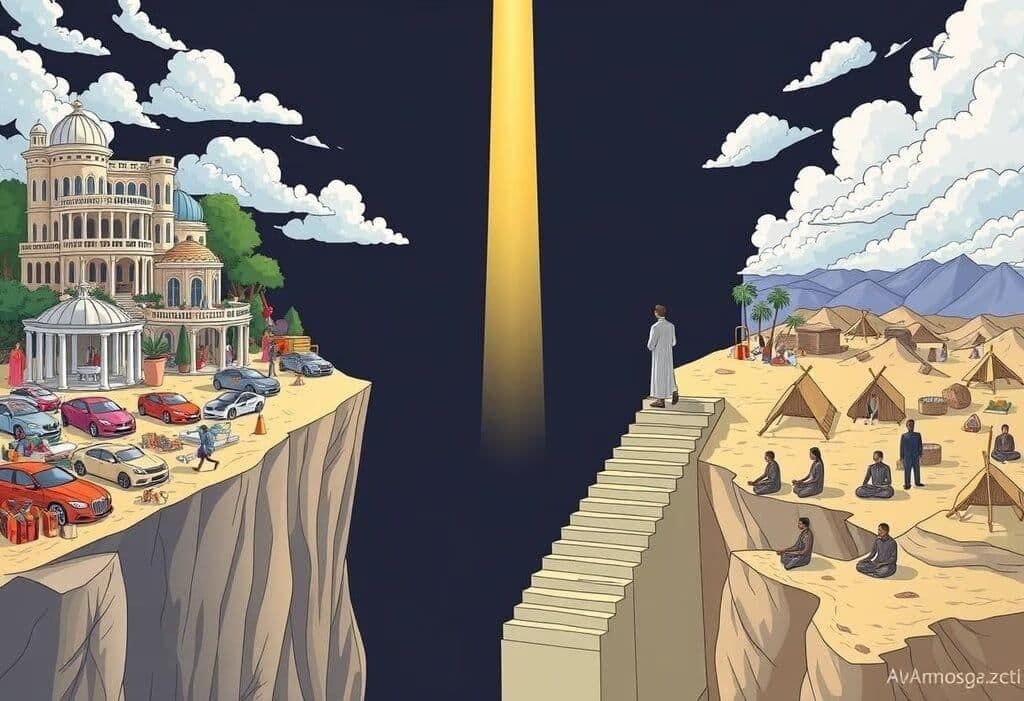O P Gauba Summary: Concept of Ideology-5 | PSIR Optional for UPSC PDF Download
Gandhism
Gandhism is named after Mahatma Gandhi (M.K. Gandhi) (1869-1948), an Indian social and moral philosopher. His social and political ideas are summed up as Gandhism. He did not create a formal document specifically for his philosophy. Instead, his thoughts are scattered across numerous notes, pamphlets, and his Autobiography ( My Experiments With Truth ; 1929). He even denied the existence of 'Gandhism'. However, over time, it has shown great potential for applying Gandhian principles to various social, economic, and political situations, and their relevance continues to grow. This demonstrates that the Gandhian way of thinking not only has a distinct identity but also represents a complete worldview. This is the foundation of Gandhism.
Politics and Ethics
As a Moral Philosopher
Gandhi saw ethics as the most important factor guiding all human behavior, including politics. His ethical beliefs were rooted in the moral teachings of various religions, with a special emphasis on ancient Hinduism, known as sanatana dharma. He strongly advocated for the spiritualisation of politics, arguing that for politics to benefit humanity, it must be directed by the highest ethical and spiritual standards. This means that politics should be driven by strong moral principles rather than self-interest.
Gandhi's Philosophy on Means and Ends
 Peaceful Resistance
Peaceful Resistance
Nirmal Kumar Bose, in his book "Selections from Gandhi," published in 1948, discusses Mahatma Gandhi's beliefs about the relationship between means and ends. Gandhi emphasized the importance of using good methods to achieve good results and rejected the idea that bad methods could be justified for a good purpose.
- Means are Everything: Gandhi believed that the means we use are not just important but are everything. The end result is directly proportional to the means used. This principle, according to Gandhi, has no exceptions.
- Seed and Tree Analogy: Gandhi compared means and ends to a seed and a tree. Just as the type of tree is determined by the type of seed, the outcome is determined by the means used. This means that only the right means will lead to the right outcome.
- Karma and Phala: Gandhi also likened means and ends to action (karma) and its outcome (phala). This concept, derived from the Bhagavad Gita, a sacred Hindu text, emphasizes that while we have control over our actions, we do not have control over their outcomes.
- Inseparability of Means and Ends: Means and ends are like two sides of a coin; they cannot be separated. Using immoral methods to achieve moral results will corrupt the outcome. For example, authority based on fear cannot inspire love and respect.
- Satyagraha and Swaraj: Gandhi chose the path of satyagraha (truth force) to achieve swaraj (independence) because he believed that the means were as sacred as the goal. Satyagraha involved the practice of ahimsa (non-violence), which represented the right way to act. Gandhi famously declared, "For me, ahimsa comes before swaraj," highlighting the primacy of ethical means in his philosophy.
Gandhi's Perspective on Religion
 Spiritual Harmony
Spiritual Harmony
Gandhi used the terms 'spiritual,' 'religious,' and 'moral or ethical' interchangeably. These concepts, in his view, all urged individuals to avoid wrongdoing and embrace goodness. He believed that at their core, all religions are identical. The God worshipped by Hindus is the same as the God worshipped by Muslims or Christians. All religions advocate for piety and charity towards others. No religion is superior or inferior to another, and fostering religious tolerance is essential for social harmony. Gandhi articulated his understanding of religion by saying:
By religion, I do not mean formal religion, or customary religion, but that religion which underlies all religions, which brings us face to face with our Maker.
(The Mind of Mahatma Gandhi, compiled by R.K. Prabhu and U.R. Rao; 1945)
Religion and Politics
For Gandhi, practicing religion was integral to his pursuit of truth, which naturally led him into the realm of politics. He believed that engaging in politics without the foundation of religion could be detrimental to one's spiritual well-being. In his autobiography, The Story of My Experiments with Truth, Gandhi expressed:
My devotion to Truth has drawn me into the field of politics; and I can say without the slightest hesitation and yet in all humility, that those who say that religion has nothing to do with politics do not know what religion means.
In essence, Gandhi saw a deep connection between politics and ethics in his worldview.
Truth and Non-Violence
At the core of Gandhism lies a profound commitment to truth. However, the quest for truth is as difficult as the search for God. For Gandhi, God and truth are intricately connected. Showing devotion to God involves caring for His creation, particularly by serving the downtrodden. As
Gandhi expressed in Harijan (1939)
I see God in the hearts of the voiceless millions. They may not see Him, but I do. I worship the God who is Truth or the Truth that is God by serving these millions.
Non-violence in the Pursuit of Truth
Non-violence is an essential part of the quest for truth. It means refraining from violence towards other living beings. This reflects the negative side of non-violence. On the positive side, it means loving everyone, even those who hate us. In Gandhi's own words:
- It is non-violence only when we love those that hate us.
- I know how hard it is to follow this great law of love.
- However, aren't all great and good things difficult to achieve?
- The love of the hater is the hardest of all.
- But with God's grace, even this challenging thing can become easy if we wish to do it.
Forms of Violence
Gandhi believed that even thinking of harming someone or wishing them ill is a form of violence that should be avoided. Hatred or resentment towards anyone also counts as violence. Wanting more material possessions than one needs can be seen as violent because it denies others what they need. Polluting the environment and harming public health is also a form of violence. Therefore, the principle of non-violence includes all rules of good citizenship and human decency.
The Strength of Non-violence
When facing injustice, non-violence should not be seen as weakness. It is the strength of the strong, specifically their moral strength, which comes from a strong commitment to truth. Fighting for a just cause with faith in truth can lead to a 'change of heart' in a powerful opponent, making them yield. Non-violence is the art of overcoming physical force with spiritual strength. It is a method of self-purification. Practicing non-violence gives significant power to defeat falsehood.
Gandhi's approach to combating the powerful British Empire was fundamentally based on the principle of non-violence (ahimsa). His methods of civil disobedience and satyagraha (believing in the power of truth) were closely tied to non-violence. Additionally, his concepts of trusteeship and his vision of a classless society also reflected his commitment to truth and non-violence.
Doctrine of Trusteeship
Generally, Gandhi advocated for a simple way of living, both in terms of production and consumption. He favoured simple technology over heavy industries because simple technology could create more jobs, while advanced technology could lead to job losses and promote negative consumerism. Gandhi supported 'production by the masses' instead of 'mass production' using heavy machinery. However, he recognised that a sudden shift to this approach was impractical.
He believed that the broader use of simple technology should be considered as developments progressed. Meanwhile, current production methods could continue with necessary changes in how production owners viewed their roles. As Gandhi expressed in the Amrita Bazar Patrika (1934):
- What is needed is not the extinction of landlords and capitalists, but a transformation of the current relationship into a healthier one.
To achieve this transformation, Gandhi proposed his doctrine of trusteeship. He urged landlords and capitalists to see themselves not merely as owners of their wealth, but as 'trustees' of a divine gift meant for the benefit of humanity. Gandhi recognised that the existing system had become oppressive due to declining moral values. He believed that if those in charge of agriculture and industry could be encouraged to act as public servants, they would earn respect instead of hatred, shifting class conflict to class cooperation. Gandhi advocated for using the power of truth and non-violence ( ahimsa ) to inspire a 'change of heart' among the wealthy members of society.
Critics argue that the idea of a 'change of heart' among the rich is an intriguing concept, but it is unlikely to be feasible in reality.
Vision of a Classless Society
 Equal Dignity
Equal Dignity
Gandhi's belief in human equality led him to strongly advocate for a classless society. He recognized that the division of labour among individuals is necessary, but the class division in society is not inherently tied to this division of labour. Instead, it arose from the perception that physical labour was inferior to mental labour or mere leisure.
Bread Labour
- Gandhi promoted the idea of 'bread labour' to foster equality among people.
- This concept encouraged everyone to engage in physical labour as a means of contributing to their food production.
- Bread symbolizes various food items that people consume.
- By involving everyone in physical labour alongside their other responsibilities, the stigma associated with such work diminishes.
- This approach cultivates a sense of 'dignity of labour' throughout society.
- It promotes equality among individuals, helping to narrow the gap between the rich and the poor.
Gandhi also fought against discrimination based on gender and religion. He believed in equality between men and women and among people of different faiths. His vision of a classless society involved changing people's attitudes towards these forms of discrimination. He stressed the importance of moral regeneration in society, which required a commitment to truth and non-violence.
Gandhism and Marxism
Gandhi and Marx were both genuinely concerned about the struggles of the oppressed and envisioned a society without classes or states. However, while some see similarities in their ideas, a closer examination reveals that their differences are more significant.
Key Differences
- Religion: Gandhi viewed religion as a source of moral guidance and a tool for social change, while Marx referred to religion as "the opium of the people."
- Technology: Gandhi advocated for simple technology, whereas Marx believed in advanced technology as a means of liberation.
- Class Divisions: Gandhi attributed class divisions to a mental attitude that disrespects physical work, while Marx blamed private property for these divisions.
- Class Cooperation vs. Conflict: Gandhi supported class cooperation, whereas Marx argued for class conflict as a driving force for social change.
- Trusteeship vs. Revolution: Gandhi proposed the idea of trusteeship to ease tensions between the wealthy and the poor, while Marx encouraged the working class to overthrow capitalism.
- The State: Gandhi viewed the state as a cold machine that coerces people, while Marx saw it as a tool for class oppression.
- Non-Violence and State: Gandhi believed that if non-violence became a universal principle, society would self-regulate, making the state unnecessary. In contrast, Marx expected that after a socialist revolution and the full development of production, "the state will wither away."
- Future Society: Gandhi imagined a future with self-disciplined individuals who have minimal needs and a strong sense of moral duty to society. In contrast, Marx envisioned a self-regulated society governed by the principle: "from each according to his ability, to each according to his need."
Comparative Study of Marxian and Gandhian Views on Ideology
The Core Issue
 Duality of Existence
Duality of Existence
- Materialism: Emphasizes a scientific understanding of material conditions.
- Spiritualism: Focuses on moral and spiritual dimensions.
Basis of Ideology
- Marxian View: Negative ideological perspective towards capitalism.
- Gandhian View: Positive and moralizing force, advocating for ethical considerations in economic practices.
Role of Religion
- Marxian View: Sees religion as an instrument for protecting private property and perpetuating class distinctions.
- Gandhian View: Advocates for equal respect for all religions, viewing them as essential for the moral and spiritual development of individuals.
Impact of Technology
- Marxian View: Critiques the negative impact of technology on moral growth, while acknowledging its potential to enhance productivity.
- Gandhian View: Emphasizes the need for technology to align with moral and ethical considerations, ensuring it serves the greater good.
Basis of Class Division
- Marxian View: Divides society into owners and non-owners of resources used for production, highlighting class struggles.
- Gandhian View: Critiques the mental outlook that despises physical labor, promoting respect for all forms of work.
Recommended Relations Between Classes
- Marxian View: Advocates for class struggle and revolution.
- Gandhian View: Promotes class cooperation and harmony.
Means to Achieve Ideals
- Marxian View: Calls for the overthrow of capitalism through revolutionary means.
- Gandhian View: Proposes the doctrine of trusteeship, encouraging capitalists to act as trustees for public welfare and restoring the dignity of labor through universal bread labor.
Vision of a Classless Society
- Marxian View: Envisions a society where ownership of production resources is collective, and labor is compulsory to ensure equity.
- Gandhian View: Advocates for voluntary and cooperative ownership models, emphasizing ethical labor practices.
Nature of the State
- Marxian View: Sees the state as an instrument of class domination, oppression, and exploitation of the dependent class.
- Gandhian View: Critiques the state as a soulless machine enforcing rules without moral responsibility, advocating for a more humane and ethical governance model.
The intricacies of Marxian and Gandhian ideologies reveal fundamental differences in their approaches to materialism, spirituality, class relations, and the role of the state. While Marx advocates for a revolutionary overthrow of capitalist structures, Gandhi emphasizes moral persuasion and ethical considerations in achieving societal goals. Both perspectives offer valuable insights into the complexities of ideology and its impact on society.
Stateless Society
 Equitable Society
Equitable Society
- In a classless society, the forces of production will eventually lead to the gradual fading away of the state.
- With the principle of Ahimsa (non-violence), individuals will cultivate self-discipline and self-regulation, making the presence of the state unnecessary.
Image of Future Society
- A self-regulated society will function on the principle of "from each according to his ability, to each according to his need."
- This society will be composed of self-disciplined individuals with minimal personal needs and a strong sense of moral responsibility towards fulfilling social needs.
owards anyone also counts as violence. Wanting more material possessions than one needs can be seen as violent because it denies others what they need. Polluting the environment and harming public health is also a form of violence. Therefore, the principle of non-violence includes all rules of good citizenship and human decency.
The Strength of Non-violence
When facing injustice, non-violence should not be seen as weakness. It is the strength of the strong, specifically their moral strength, which comes from a strong commitment to truth. Fighting for a just cause with faith in truth can lead to a 'change of heart' in a powerful opponent, making them yield. Non-violence is the art of overcoming physical force with spiritual strength. It is a method of self-purification. Practicing non-violence gives significant power to defeat falsehood.
Gandhi's approach to combating the powerful British Empire was fundamentally based on the principle of non-violence (ahimsa). His methods of civil disobedience and satyagraha (believing in the power of truth) were closely tied to non-violence. Additionally, his concepts of trusteeship and his vision of a classless society also reflected his commitment to truth and non-violence.
|
173 videos|574 docs|148 tests
|
FAQs on O P Gauba Summary: Concept of Ideology-5 - PSIR Optional for UPSC
| 1. What are the core principles of Gandhism? |  |
| 2. How does Gandhi's philosophy relate to politics and ethics? |  |
| 3. In what way did Gandhi's perspective on religion influence his ideology? |  |
| 4. What is the doctrine of trusteeship in Gandhian thought? |  |
| 5. How do Gandhian and Marxist ideologies compare regarding their vision for society? |  |
















